Be aware › Mountain goats

Welcome to mountain goat country
Some things you should know about mountain goats
Mountain goats (Oreamnos americanus) are adapted to very cold, snowy weather and steep, rocky high-elevation environments.
Adult male mountain goats are called billies, female mountain goats are nannies and kids are young goats. Both male and female mountain goats grow horns and have beards, so it’s hard to tell them apart. There are, however, small differences: nannies have a thinner horn at the base and usually have the appearance of a bigger gap between their horns, and billies are typically larger in size than nanny goats. Mountain goat horns contain yearly growth rings, and goats do not shed their horns.
Nanny goats typically give birth in late May and then the nannies and kids join up and form large nursery herds.
Some adaptations that are unique to mountain goats:
- Mountain goats’ hooves are cloven (split in two) and have rubbery pads and large dewclaws, which helps them grip the rocks when they are climbing steep and slippery slopes.
- They have a thick, wooly double coat which can range in appearance from bright white to beige or dull gray. This helps camouflage goats on a snowy landscape.
- A mountain goat’s undercoat is made up of short, dense wool. The outer layer of long, thick, hollow hair helps insulate the animal in extremely windy, cold and snowy conditions.
- In the spring, mountain goats shed their heavy coats by rubbing against trees and rocks.

Utah is home to roughly 1,500 mountain goats located across the state. All of Utah’s current populations are the result of introductions; the first relocation occurred in 1967 when six mountain goats (two billies and four nannies) were brought from Olympic National Park in Washington and released in the Lone Peak area.
Mountain goat habitat & feed
Mountain goats are found in high-elevation mountain areas with rugged, rocky alpine terrain.
Currently, Utah’s largest mountain goat herds are located in the Uinta Mountains, as well as the Tushar Mountains and Mount Dutton near Beaver. There are a few smaller herds scattered throughout the Wasatch Mountain Range — including areas on and around Willard Peak, Wasatch Peak, Mount Nebo, Mount Timpanogos and in Little Cottonwood Canyon — and the La Sal Mountains in southeastern Utah.
Mountain goats don’t migrate long distances like elk or deer, but they will sometimes move to slightly lower elevations in the mountains during extreme winter conditions.
During the summer months, mountain goats will mostly graze in meadow areas with abundant feed while the nanny goats are nursing their kids. They are fairly active throughout the day, except for in the middle of the day when it is really hot in the summer.
Mountain goats are herbivores (they only eat plants). Their diet is mostly made up of high-altitude grasses and flowering plants, and they will also eat conifers, shrubs and mossy lichen.
How to prevent incidents with mountain goats
Give mountain goats plenty of space. While they may seem docile when they are grazing, they can react quickly and may charge at perceived threats. Mountain goats are strong, powerful animals, and they are well adapted to run fast even on the most rugged terrain.
Many of the high alpine areas where mountain goats are found aren’t accessible — due to deep snow — until mid-to-late summer. Hikers will most frequently encounter nanny and kid mountain goats in the lower-elevation meadow areas since those are easier to access than other, steeper mountain goat terrain.
What you should know about mountain goat behavior:
- Male mountain goats typically get more aggressive during their breeding season (known as the rut), which usually takes place in November.
- Nanny goats get more aggressive when they have baby goats, which are born in the spring. The nannies are often territorial during this period when they have their kids with them.
- Mountain goats can impale people or pets with their sharp horns, so you don’t want to risk coming into contact with one, especially in a remote setting far from medical help.
If you encounter a mountain goat while hiking or backpacking, here are some tips to help keep you safe:
- Give them plenty of space (roughly 150 feet or more). Mountain goats will often stand their ground or charge at you if you get too close.
- They are found in some pretty extreme terrain, so you don’t want to risk getting too close to one while on the edge of a cliff. Be aware of your surroundings, stay alert and don’t put yourself in a dangerous position.
- If you see a mountain goat coming down the trail you are on, turn around and head back down the trail to avoid getting too close to them.
- Like other large mammals, mountain goats can be especially aggressive toward dogs, which they perceive to be a predatory threat. Keep dogs leashed and under control at all times. It is against Utah law to allow dogs to chase or harass protected hoofed wildlife like mountain goats.
- If a mountain goat begins approaching you, slowly back away and give it some distance. If it continues approaching, wave your arms and make loud noises to try and scare it away.
- Talk to the land-managing agency for the area where you’re hiking and look for signs at trailheads to know if a particular trail has had reports of aggressive mountain goats. Then stay alert.
- Never feed a mountain goat or allow it to lick your skin.
If you have an encounter with aggressive wildlife, please alert the Utah Division of Wildlife Resources office near you. If the encounter or sighting occurs after hours or on the weekend, please call your local police department or county sheriff’s office, who can contact a DWR conservation officer to handle the situation.

